1700 – 1800, France
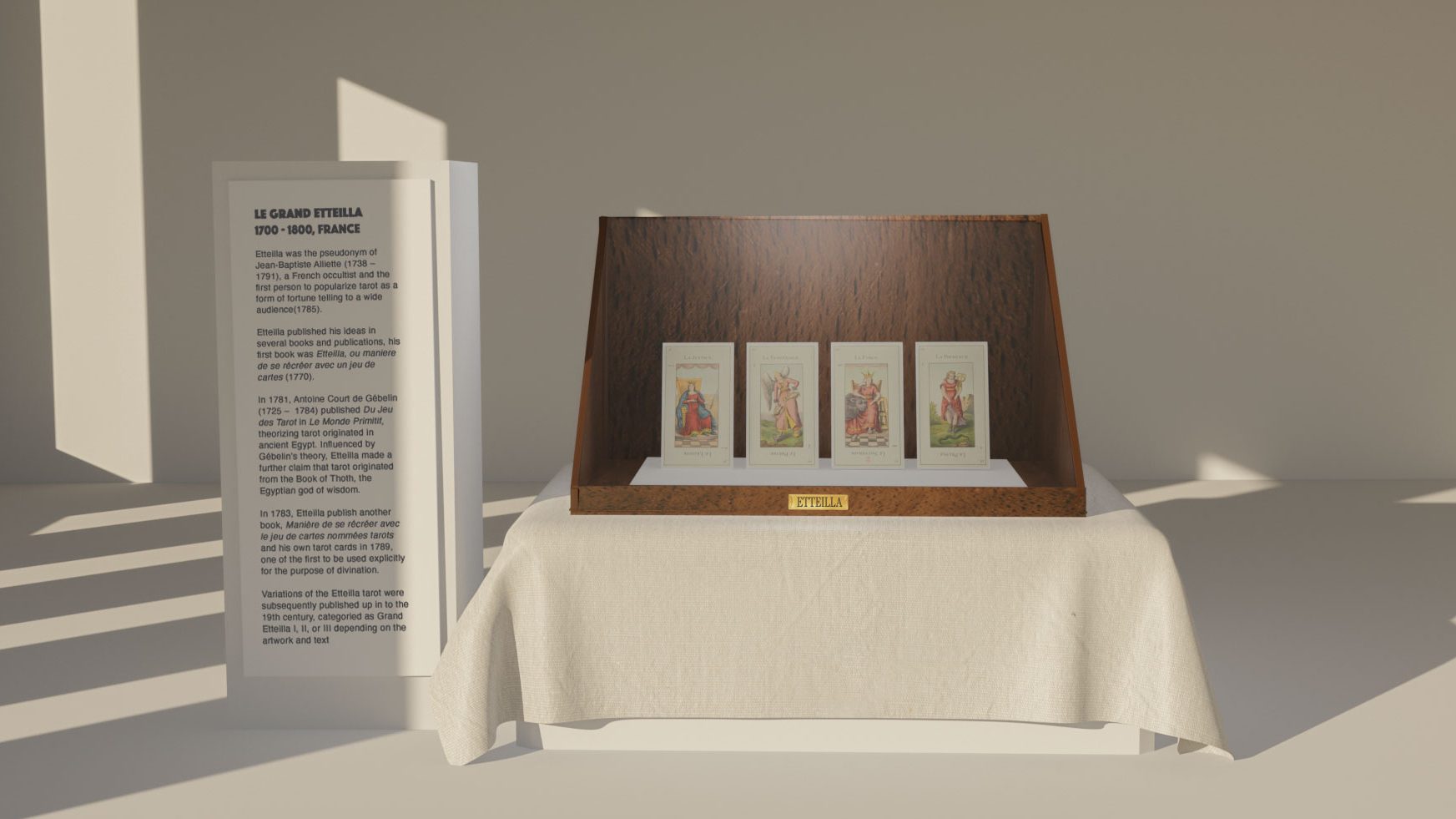
The historical artifact I’ve chosen for my museum exhibition are tarot cards, specifically Le Grand Etteilla from 1700 – 1800 France.
History
Eteilla was the pseudonym used by Jean-Baptiste Alliette (1738 – 12 December 1791), a French occultist and the first to popularize tarot as a form of fortune telling as opposed to a game of cards (1785) (Museum of Tarot, n.d.).


Etteilla published his ideas in several books and publications, his first book was Etteilla, ou maniere de se récréer avec un jeu de cartes (1770).
In 1781, Antoine Court de Gébelin (1725 – 1784) published Du Jeu des Tarot in Le Monde Primitif, theorizing tarot originated in ancient Egypt. Influenced by Gébelin’s theory, Etteilla made a further claim that tarot originated from the Book of Thoth, the Egyptian god of wisdom (Oatman-Stanford, 2014).

Although it’s impossible to find any evidence to support the connection between tarot and ancient Egypt (Penco, 2013, p. 146), the association tarot had to Egyptian mysticism lended to their credibility (Oatman-Stanford, 2014).
In 1783, Etteilla publish another book, Manière de se récréer avec le jeu de cartes nommées tarots and his own tarot cards in 1789, one of the first to be used explicitly for the purpose of divination.
Variations of the Etteilla tarot were subsequently published up in to the 19th century, categoried as Grand Etteilla I, II, or III depending on the artwork and text (Christie’s, 2006).
… without Etteilla there is no reason to suppose that anyone would have hit on the idea of using the Tarot pack for divination: most practitioners of fortune telling are singularly lacking in originality, and it was in Paris that the more successful ones practised, whereas … the traditional Tarot pack and the game played with it were virtually unknown in Paris through the entire eighteenth and nineteenth centuries.
(Dummett (1980), p. 113)
Process
My original plan was to illustrate my own interpretation of 22 of the 78 cards that corresponded to the Major Arcana of the Tarot of Marseilles (another pack of tarot cards that were popular around the 17th and 18th century in France). However, after finishing the first card, I realized this would be a much larger project than I would be able to take on given the time.
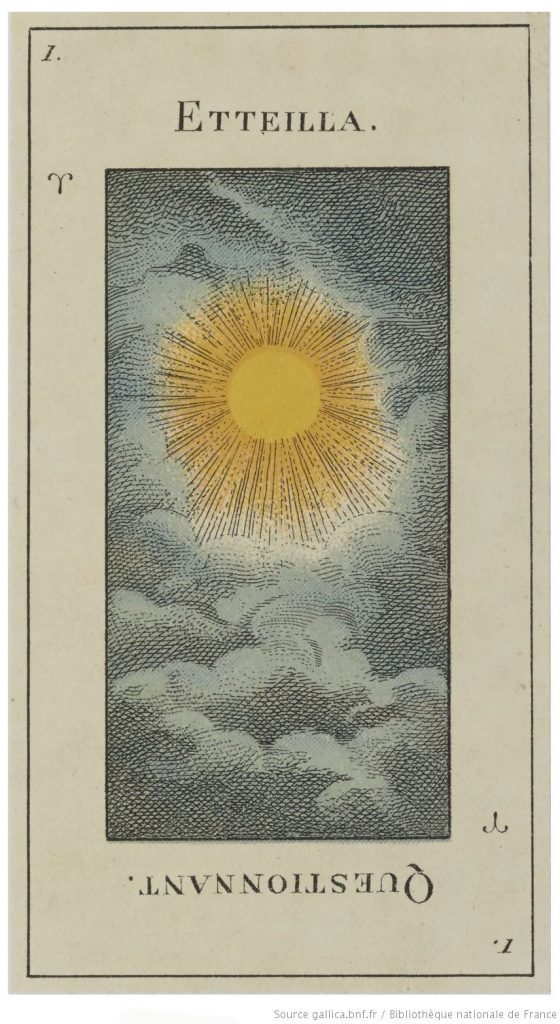
For the actual exhibit portion of the project, I build it in Blender. This was my first time using the program, so I had to teach myself how to navigate the controls through online tutorials.
Despite following tutorials, however, I found it challenging to execute even simple tasks. I almost gave up a few times, but the final result is close enough to what I was hoping to achieve.

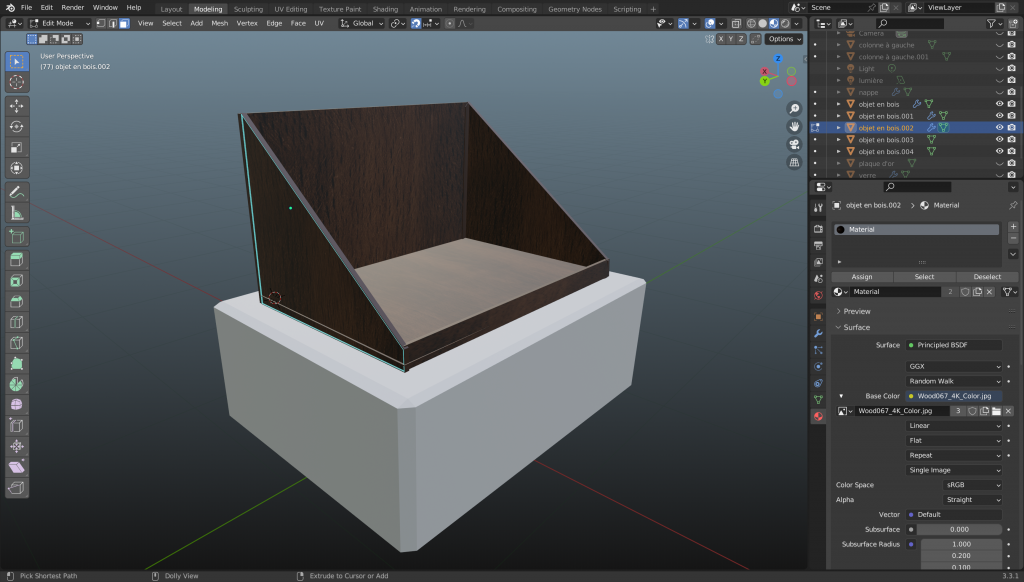
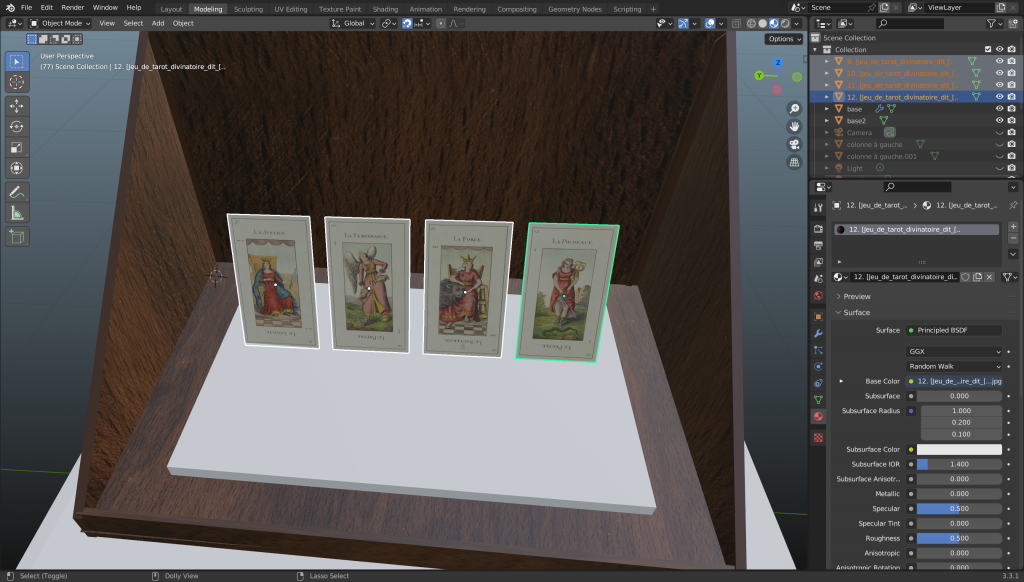
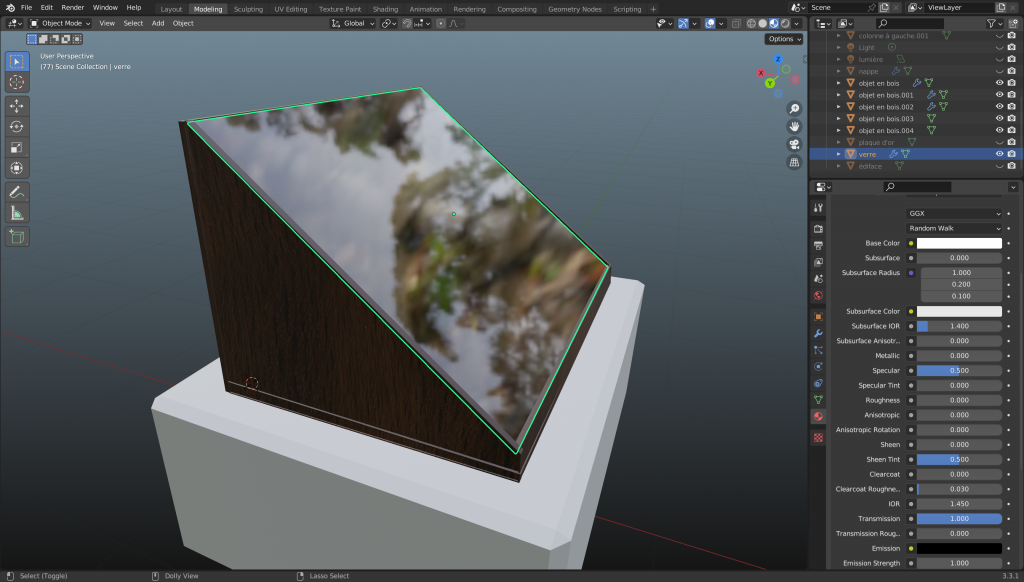

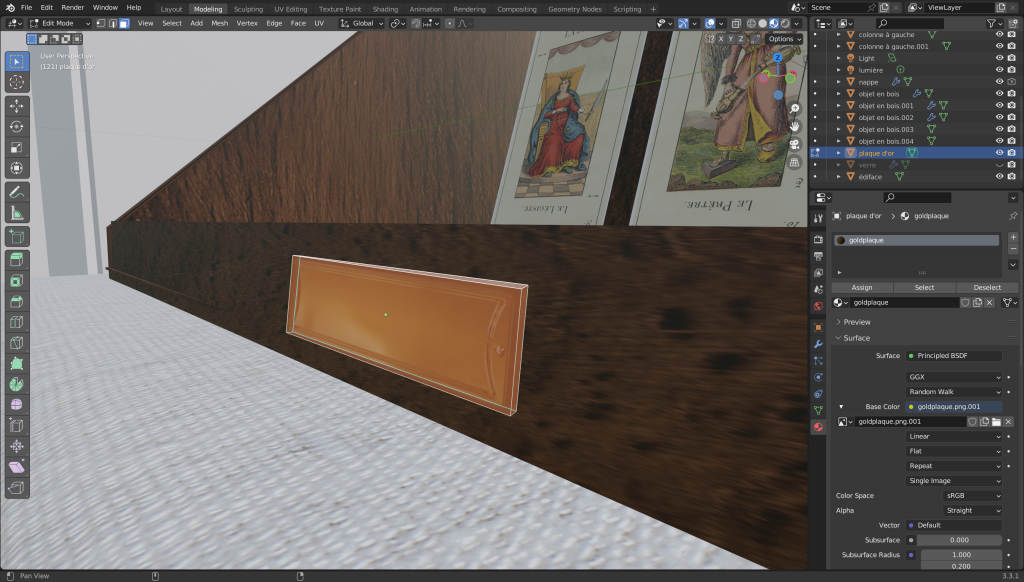
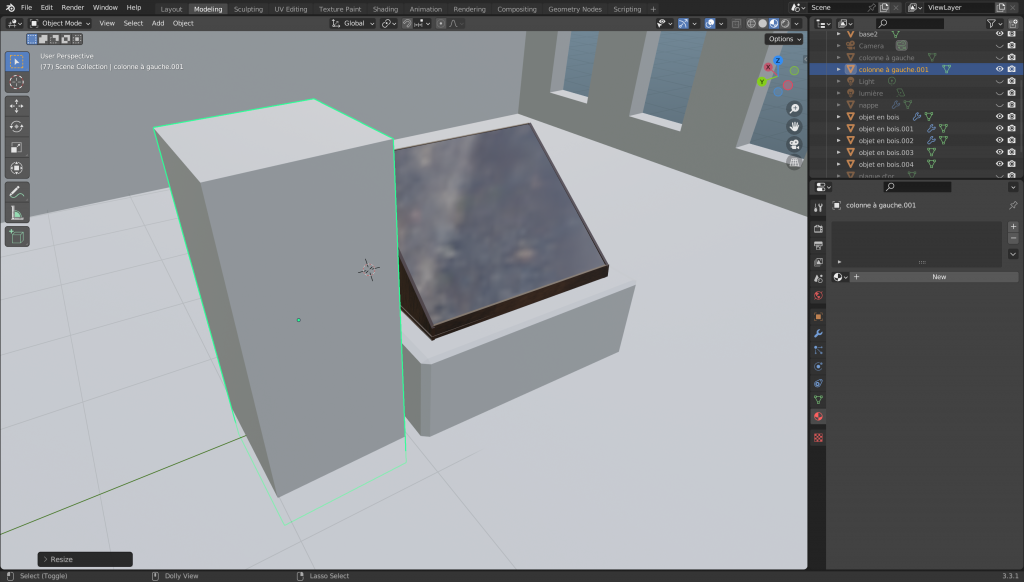

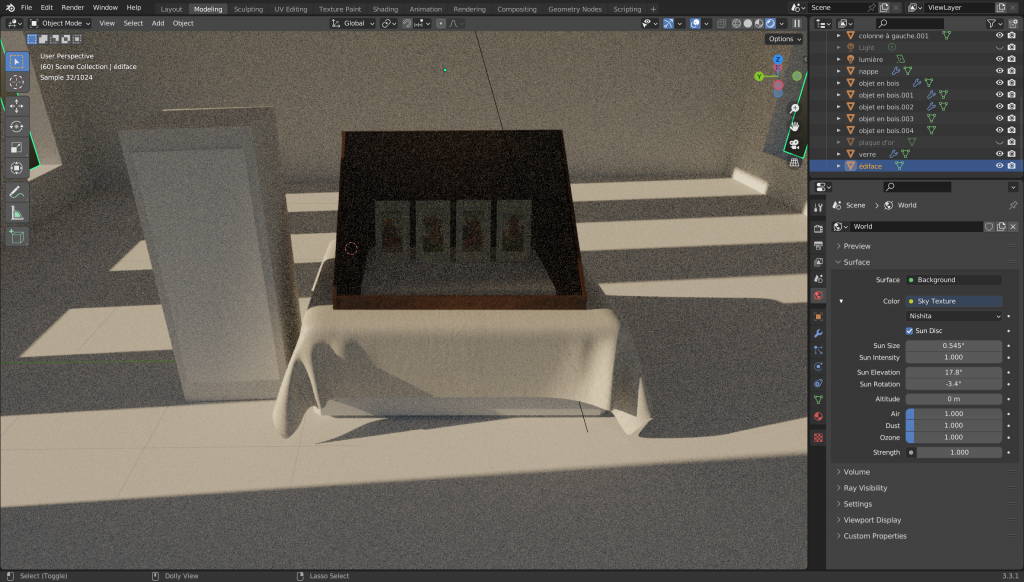

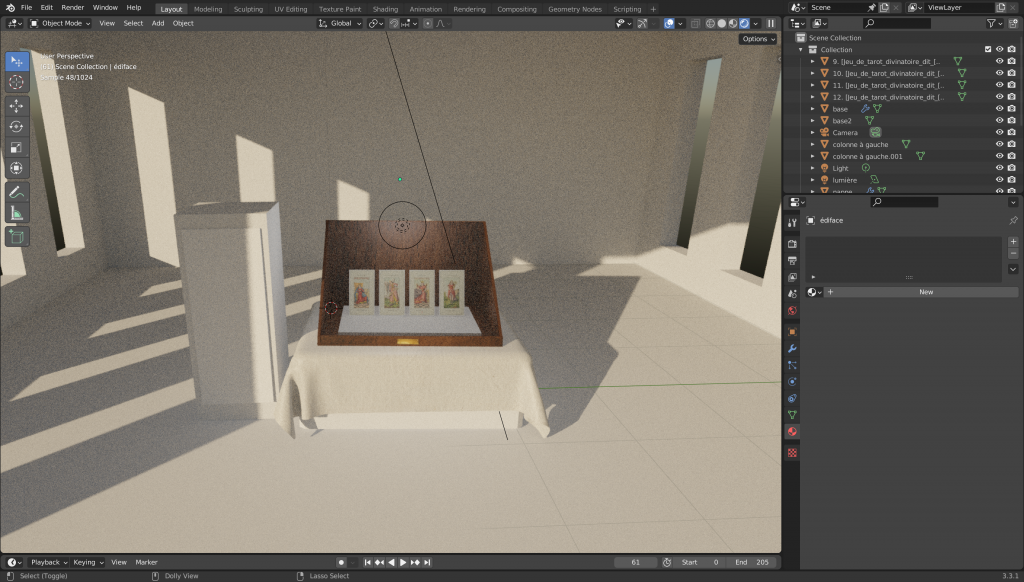
References
Alliette, Jean-Baptiste (1770). Bibliothèque nationale de France. Etteilla, ou Maniere de se recreer avec un jeu de cartes . Par M*** . https://gallica.bnf.fr/ark:/12148/bpt6k3250717/f13.planchecontact
Alliette, Jean-Baptiste (1785). Bibliothèque nationale de France. Manière de se récréer avec le jeu de cartes nommées tarots . Pour servir de quatrieme cahier à cet ouvrage. Par Etteilla. https://gallica.bnf.fr/ark:/12148/bpt6k3128878/f1.planchecontact
Bibliothèque nationale de France. Feuilles de moulage du jeu de tarot divinatoire dit “Grand Etteilla” ou “tarot égyptien”] : [jeu de cartes, estampe (1890). https://gallica.bnf.fr/ark:/12148/btv1b10528654j/f1.planchecontact
Christie’s Live Auction. (2006, June 21). Historic Cards and Games: The Stuart and Marilyn R. Kaplan Collection. Lot 54. https://www.christies.com/lot/lot-4740225?ldp_breadcrumb=back&intObjectID=4740225&from=salessummary&lid=1
Court de Gébelin, Antoine (1773-1782). Bibliothèque nationale de France. Monde primitif analysé et comparé avec le monde moderne considéré dans son génie allégorique et dans les allégories auxquelles conduisit ce génie ; précédé du Plan général des diverses parties qui composeront ce Monde primitif. T. 8 / par M. Court de Gébelin,… https://gallica.bnf.fr/ark:/12148/bpt6k1087220/f465.planchecontact
Dummett, M., & Mann, Sylvia. (1980). The game of Tarot : From Ferrara to Salt Lake City / Michael Dummett, with the assistance of Sylvia Mann. London: Duckworth.
Museum of Tarot. Top most attractive tarot decks in museum (Tarock & Tarocco & Tarocchi & other historical decks). (n.d.). https://www.museum-tarot.org/p/top-10-most-attractive-tarots-deck-in.html
Oatman-Stanford, H. (2014). Tarot Mythology: The Surprising Origins of the World’s Most Misunderstood Cards. https://escholarship.org/uc/item/6bh7j4z4
Orsini, J (Simon-François Blocquel) Le Grand Etteilla, ou l’Art de tirer les cartes (1838). Retrieved from Internet Archive website: https://archive.org/details/1900legrandetteilla/page/n2/mode/1up
Pauline A. (n.d.). A short history of Cartomancy. https://mystiic.com/blogs/infos/histoire-de-la-cartomancie-et-du-tarot-divinatoire
Penco, C. (2013). Dummett and the Game of Tarot. Teorema: Revista Internacional de Filosofía, 32(1), 141–155. http://www.jstor.org/stable/43046978